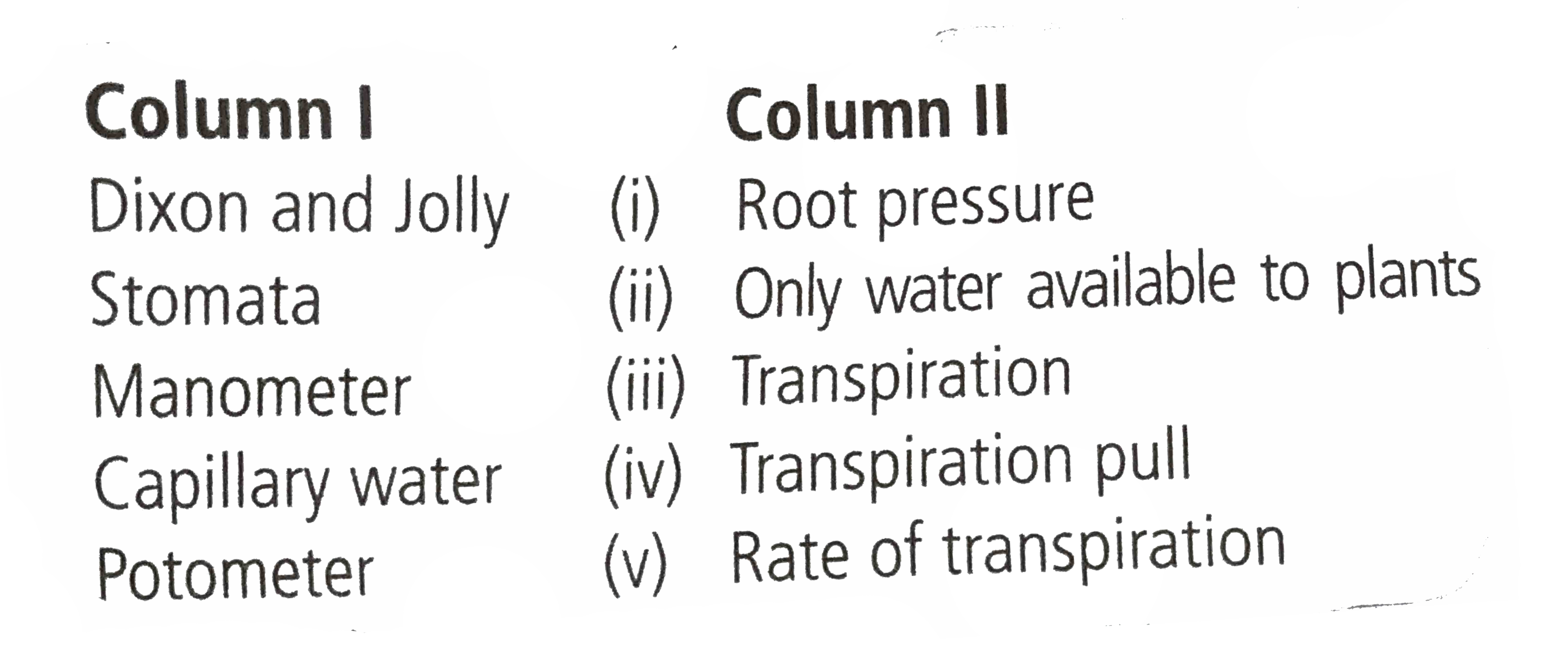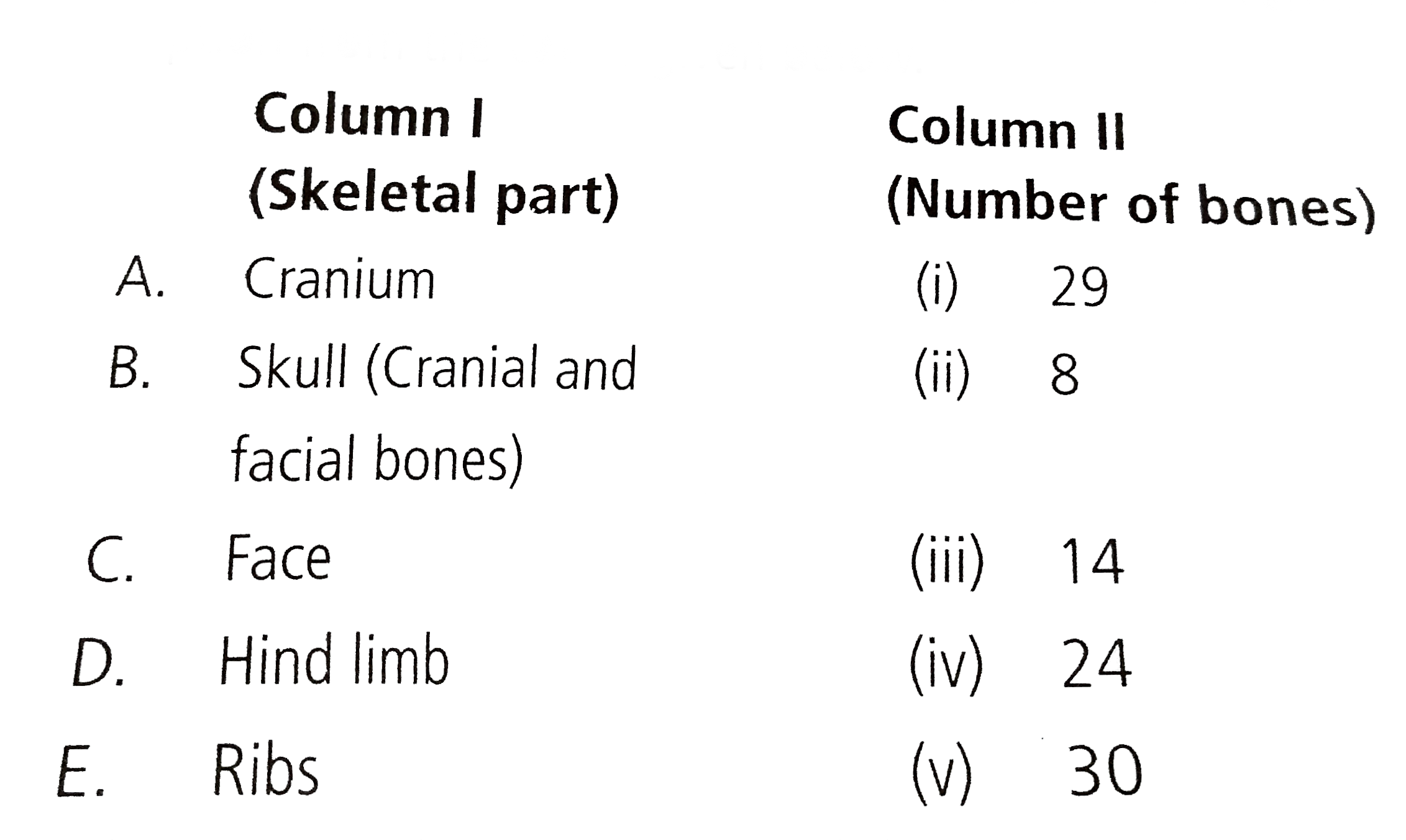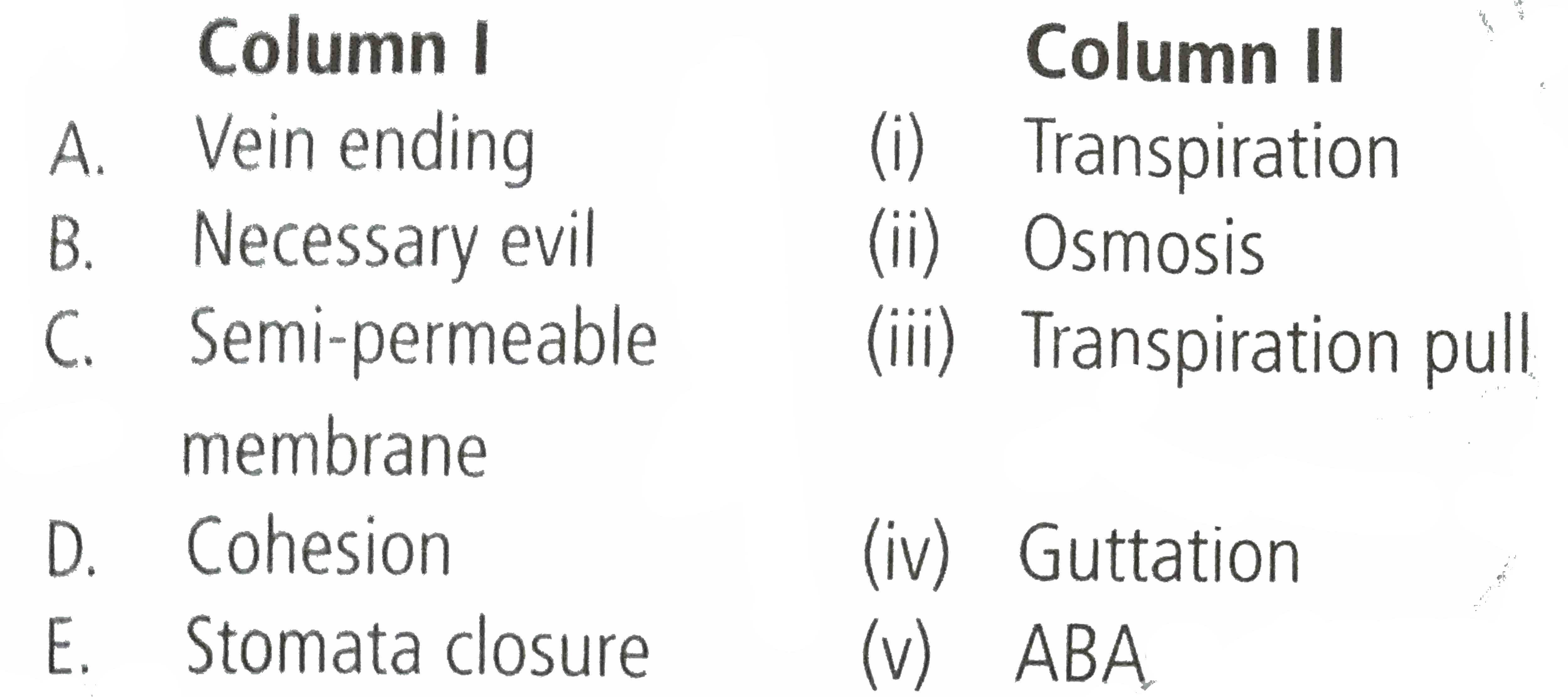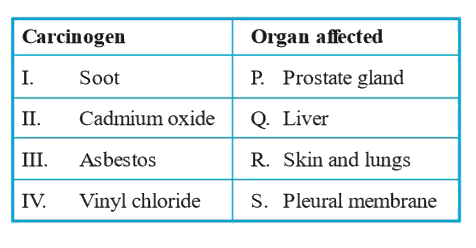Match column I with column II and select the correct option from the gives codes.
A.Cartilaginous fishes(i)Usually external fertilisationB.Bony fishes(ii)Internal fertilisation(iii)Mostly oviparous(iv)Mostly viviparous(v)Direct development
A-(i), (iii),(v), B-(ii), (iv)
A-(ii), (iv), B-(i), (iii), (v)
A-(iii), (v), B-(i), (ii), (iv)
A-(i), (ii), (iv), B-(iii), (v)
The correct Answer is:B
To solve the matching question, we need to pair the items in Column I with the correct characteristics in Column II based on the information provided about cartilaginous fishes and bony fishes.
1. Identify Cartilaginous Fishes (A):
- Cartilaginous fishes have a skeleton made of cartilage.
- They typically undergo internal fertilization.
- They are mostly viviparous (giving birth to live young).
- Therefore, we can match:
- A → (ii) Internal fertilization
- A → (iv) Mostly viviparous
2. Identify Bony Fishes (B):
- Bony fishes have a skeleton made of bones.
- They usually undergo external fertilization.
- They are mostly oviparous (laying eggs).
- They also exhibit direct development.
- Therefore, we can match:
- B → (i) Usually external fertilization
- B → (iii) Mostly oviparous
- B → (v) Direct development
3. Compile the Matches:
- For Cartilaginous Fishes (A):
- (ii) Internal fertilization
- (iv) Mostly viviparous
- For Bony Fishes (B):
- (i) Usually external fertilization
- (iii) Mostly oviparous
- (v) Direct development
4. Final Matching:
- A matches with (ii) and (iv).
- B matches with (i), (iii), and (v).
Summary of Matches:
- A → (ii) Internal fertilization
- A → (iv) Mostly viviparous
- B → (i) Usually external fertilization
- B → (iii) Mostly oviparous
- B → (v) Direct development
Codes:
- The correct option code for the matches would be:
- A: (ii), (iv)
- B: (i), (iii), (v)
- Cartilaginous fishes have a skeleton made of cartilage.
- They typically undergo internal fertilization.
- They are mostly viviparous (giving birth to live young).
- Therefore, we can match:
- A → (ii) Internal fertilization
- A → (iv) Mostly viviparous
- Bony fishes have a skeleton made of bones.
- They usually undergo external fertilization.
- They are mostly oviparous (laying eggs).
- They also exhibit direct development.
- Therefore, we can match:
- B → (i) Usually external fertilization
- B → (iii) Mostly oviparous
- B → (v) Direct development
- For Cartilaginous Fishes (A):
- (ii) Internal fertilization
- (iv) Mostly viviparous
- For Bony Fishes (B):
- (i) Usually external fertilization
- (iii) Mostly oviparous
- (v) Direct development
- A matches with (ii) and (iv).
- B matches with (i), (iii), and (v).
- A → (ii) Internal fertilization
- A → (iv) Mostly viviparous
- B → (i) Usually external fertilization
- B → (iii) Mostly oviparous
- B → (v) Direct development
- The correct option code for the matches would be:
- A: (ii), (iv)
- B: (i), (iii), (v)
Topper's Solved these Questions
- ANIMAL KINGDOMBook:NCERT FINGERTPS ENGLISHChapter:ANIMAL KINGDOMExercise:Hots
Explore 5 Videos
- ANIMAL KINGDOMBook:NCERT FINGERTPS ENGLISHChapter:ANIMAL KINGDOMExercise:NCERT examples problems
Explore 13 Videos
- ANIMAL KINGDOMBook:NCERT FINGERTPS ENGLISHChapter:ANIMAL KINGDOMExercise:Classification of non-chordates
Explore 41 Videos
- ANATOMY OF FLOWERING PLANTSBook:NCERT FINGERTPS ENGLISHChapter:ANATOMY OF FLOWERING PLANTSExercise:Anatomy Of Flowering Plants
Explore 143 Videos
- BIOLOGICAL CLASSIFICATIONBook:NCERT FINGERTPS ENGLISHChapter:BIOLOGICAL CLASSIFICATIONExercise:Biological Classification
Explore 132 Videos
Similar Questions
Knowledge Check
Match column I with column II and select the correct option from the given codes.
 AA-(i), B-(ii), C-(iii), D-(iv), E-(v), F-(vi), G-(vii)BA-(vii), B-(vi), C-(v), D-(iv), E-(iii), F-(ii), G-(i)CA-(i), B-(ii), C-(iv), D-(iii), E-(v), F-(vi), G-(vii)DA-(i), B-(ii), C-(iii), D-(iv), E-(v), F-(vii), G-(vi)
AA-(i), B-(ii), C-(iii), D-(iv), E-(v), F-(vi), G-(vii)BA-(vii), B-(vi), C-(v), D-(iv), E-(iii), F-(ii), G-(i)CA-(i), B-(ii), C-(iv), D-(iii), E-(v), F-(vi), G-(vii)DA-(i), B-(ii), C-(iii), D-(iv), E-(v), F-(vii), G-(vi)Match column I with II column II and select the correct option from the given codes .
 AA-(ii), B-(iii), C-(iv), D-(i)BA-(iii), B-(ii), C-(i), D-(iv)CA-(iii), B-(ii), C-(iv), D-(i)DA-(i), B-(ii), C-(iii), D-(iv)
AA-(ii), B-(iii), C-(iv), D-(i)BA-(iii), B-(ii), C-(i), D-(iv)CA-(iii), B-(ii), C-(iv), D-(i)DA-(i), B-(ii), C-(iii), D-(iv)Match columnI with column II and select the correct option from the codes given below.
 AA−(iv),B−(iii),C−(v),D−(ii),E−(i)BA−(i),B−(iii),C−(iv),D−(ii),E−(v)CA−(iv),B−(iii),C−(i),D−(ii),E−(v)DA−(v),B−(iv),C−(iii),D−(ii),E−(i)
AA−(iv),B−(iii),C−(v),D−(ii),E−(i)BA−(i),B−(iii),C−(iv),D−(ii),E−(v)CA−(iv),B−(iii),C−(i),D−(ii),E−(v)DA−(v),B−(iv),C−(iii),D−(ii),E−(i)
Match Column I with column II and select the correct option from the codes given below:

View SolutionMatch column I with column II and select the correct option from the codes given below.

View SolutionMatch column I with column II and select the correct option from the codes given below.

View SolutionMatch column I with column II and select the correct option from the codes given below.

View SolutionMatch column I with column II and select the correct option from the codes given below.

View Solution


